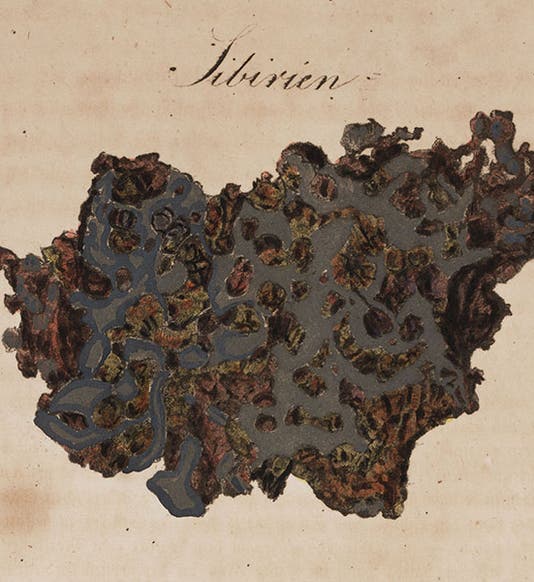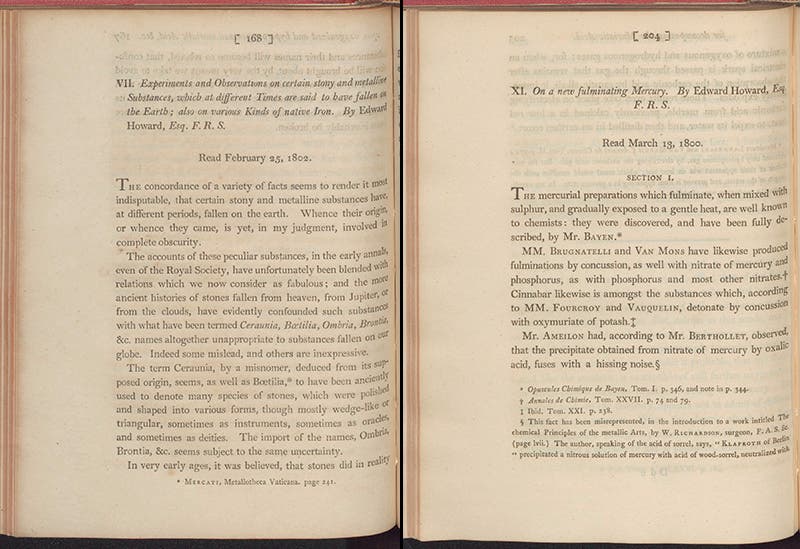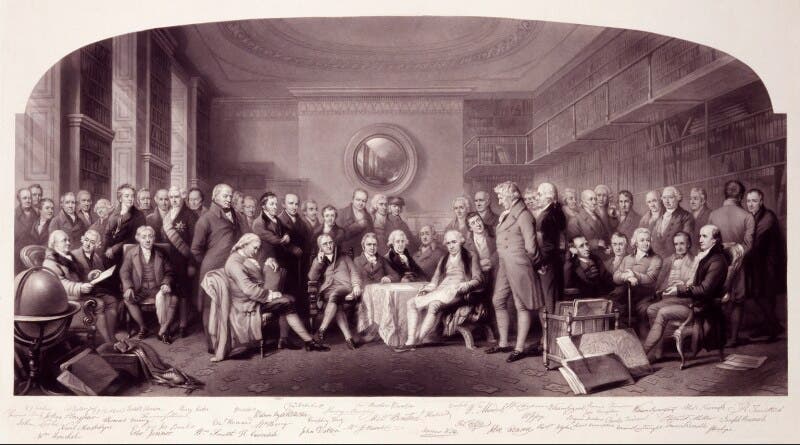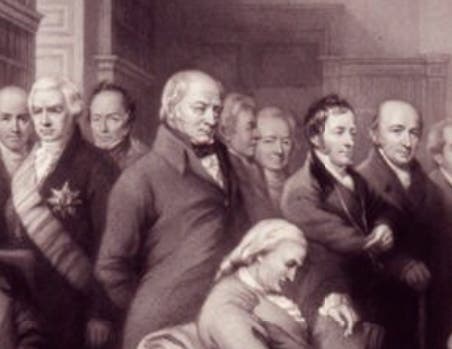Scientist of the Day - Edward Charles Howard
Edward Charles Howard, an English chemist, was born May 28, 1774. Howard was one of the very first scientists to chemically analyze the components of meteorites, both stony meteorites and the kind that used to be called “native iron”. The most famous piece of native iron was a chunk brought back from Siberia by Peter Simon Pallas, and consequently called the Pallas iron; other large iron meteorites were known from South America and Bohemia. We see above a piece of the Pallas iron, as it appeared in 1820 (first image).
Howard analyzed samples of stony meteorites and native irons, and found that they had a great deal in common and thus probably the same origin. In 1802, when he published his study, the extra-terrestrial origin of meteorites had been proposed (in 1794) but was still highly controversial; Howard's work was important in establishing that meteorites had indeed come to us from outer space, and that native irons like the Pallas iron had an extra-terrestrial origin as well. His paper appeared in the Philosophical Transactions of the Royal Society of London, which we have in our serials collection (second image).
Howard also invented, in 1800, a new chemical compound, called mercury fulminate, which he prepared by combining mercury with nitric acid and ethyl alcohol to make a compound whose chemical formula we would write as Hg(CNO)2. The striking thing about mercury fulminate is that while it is reasonably stable if you just let it sit, it is dramatically explosive when tapped with a hammer or subjected to an electrical spark. It is much more explosive than gunpowder. Here is Howard’s description of his first two experiments: "I first attempted to make the mercurial powder fulminate by concussion ... upon using 3 or 4 grains, a very stunning disagreeable noise was produced, and the faces of both the hammer and the anvil were much indented". It is not easy to dent an anvil. And then, attempting to use it in a gun in place of gunpowder, he placed 11 grains (not very much) in the chamber: "the explosion laid open the upper part of the barrel, nearly from the touch-hole to the muzzle."
Howard announced his discovery at four rather exciting meetings of the Royal Society in 1800; it was then published in the Philosophical Transactions for that year (third image). This new explosive later became the essential component of blasting caps, used to detonate explosives like dynamite and TNT. When Alfred Nobel had invented his dynamite sticks, the principal obstacle to making dynamite useful was a reliable method of detonation. Mercury fulminate blasting caps provided that reliability, and Nobel went on to make a fortune. It is safe to say that without Howard's discovery of mercury fulminate, there would have been no Nobel prizes. Perhaps Howard should get an honorary Nobel prize for providing the essential spark, shall we say.
Howard also discovered a practical and economic way of refining raw imported cane sugar, essentially inventing what is called the “vacuum pan” for evaporating sugar solutions to form crystals. This was in 1812, and it revolutionized the sugar industry. He was offered £40,000 for the patent rights, but he refused, preferring to license his patent to manufacturers, and it rapidly made him rich, but alas, it could not make him healthy, as he died of causes unknown in 1816, at the young age of 42. It is suspected that his early death was the result of his chemical investigations in the laboratory, since he experimented with many materials now known to be hazardous to one’s well-being.
We have several times in these posts referred to and reproduced an 1862 engraved group portrait called “Distinguished Men of Science, 1807-08”, an attempt to showcase the important scientific figures in Britain in the early 19th century (fourth image). The designers wanted to include Howard in the group, but there was only one portrait of Howard that anyone knew about, a tiny profile view that was engraved on a medal long after his death (we have seen a drawing of this medal in a printed article, but it doesn’t seem to have an online presence). So the artist took this profile and essentially pasted it into the group portrait between two other figures, shown in more normal three-quarters view. If you start with the man shown in side view in the chair to the left of the central table (that is Henry Cavendish, whom we profiled not so long ago), and go up to the large standing figure with his arms behind his back, just behind the back of the chair (this is William Smith, the famous geological mapper). Well, just behind Smith’s head is a man in profile, and that is Howard. A detail (below, fifth image) allows you to make him out a little better – he is directly in the center, and the only one in profile. Visually, this is all we have left of a man who, quite unusually, made outstanding contributions to three completely different fields of endeavor in his short lifespan.
Dr. William B. Ashworth, Jr., Consultant for the History of Science, Linda Hall Library and Associate Professor, Department of History, University of Missouri-Kansas City. Comments or corrections are welcome; please direct to ashworthw@umkc.edu.









